iFi Uno review: discount DAC delivers well beyond asking price
A pocketable and portable DAC that doesn't cost a fortune and, at this price, is hard to beat

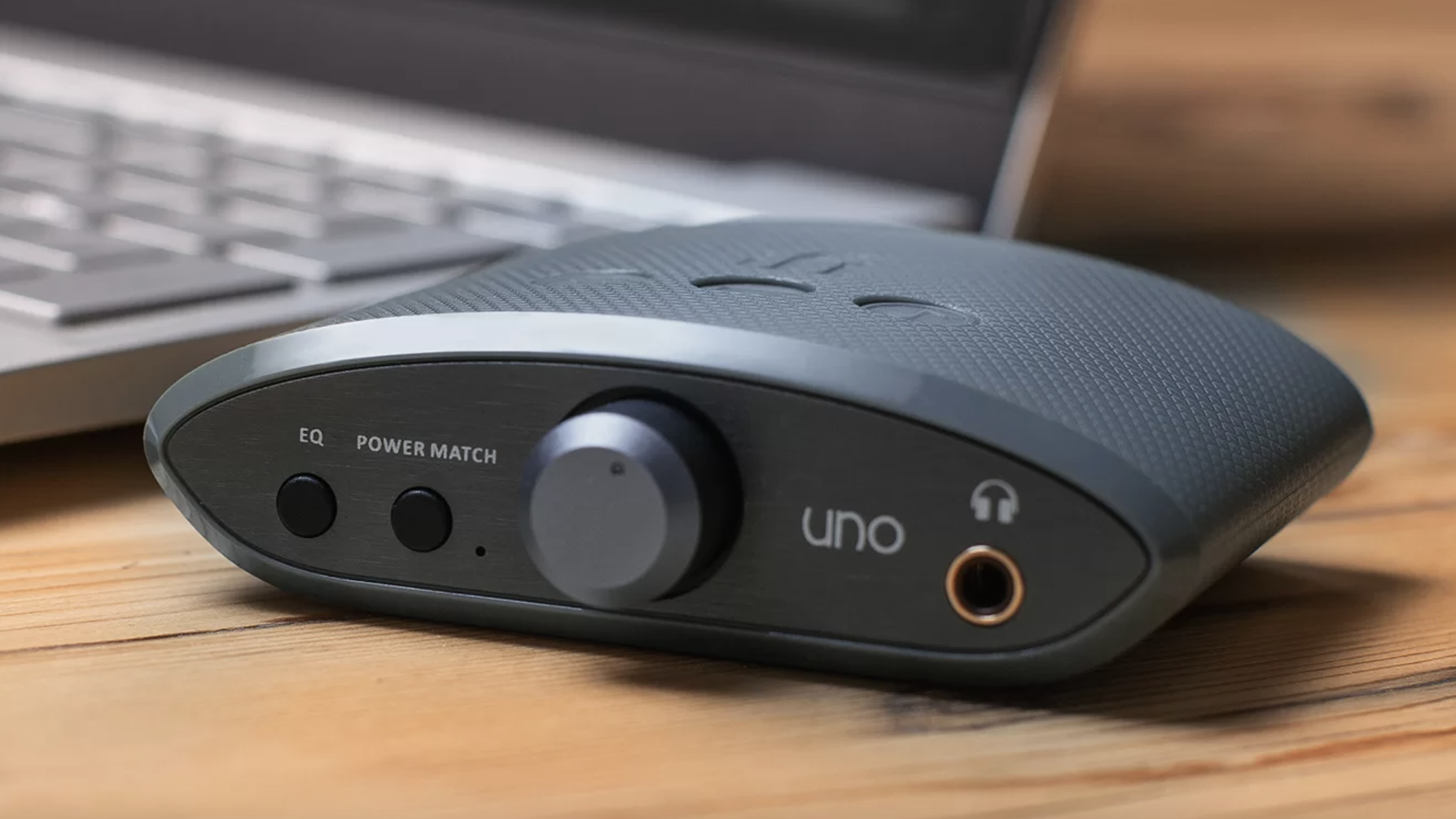
On a pound-for-pound basis, the iFi Uno is one of the wisest DAC investments you can make in your desktop and/or portable listening pleasure. You’ll be hard-pushed to spend this sort of money more effectively.
-
+
Poised, informative and quite dynamic sound
-
+
Impressive specification
-
+
Small, light and portable
-
-
Loses some composure at biggest volumes
-
-
Loses its left channel at lowest volumes
Why you can trust T3

Little headphone amp/DAC units are all the rage at the moment, and for good reason - if you’ve ever plugged your headphones straight into a laptop or smartphone (always assuming your smartphone has a headphone socket in the first place), you’ll know why. The digital-to-analogue conversion process is crucial to your listening pleasure, and computers are rubbish at it.
iFi understands this, and has built a solid reputation based on getting the best DACs done properly at a reasonable price. With the Uno, though, it wants to replace ‘reasonable’ with ‘bargain’ and bring proper desktop audio to as wide an audience as possible. Can it be done for such little outlay?
iFi Uno: Price & Availability
The iFi Uno headphone amp/DAC is on sale now, and in the United Kingdom it goes for £79 or thereabouts. In the United States it’s an even more appetising $79 or so, while in Australia you’re looking at AU$119 or something very like it.
This makes the iFi Uno one of the most affordable audio products to appear on T3.com for quite some time. That’s not to say it’s without competition, though - there are plenty of brands (not least iFi itself) with similar products to sell you for not much more money.
iFi Uno review: Features & What's New?
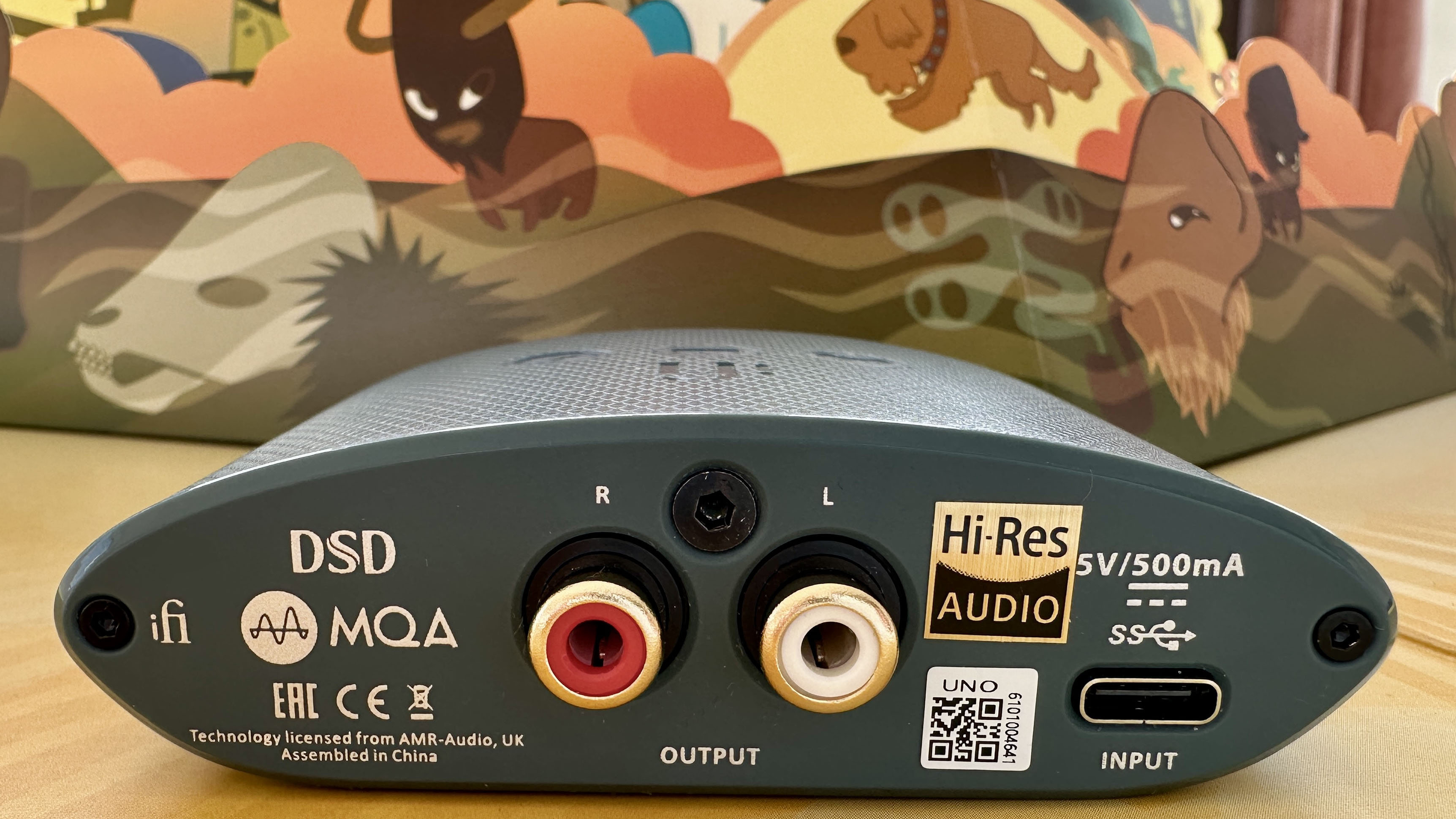
Small and affordable it may be, but the iFi Uno seems to have that Tardis-like ability to be bigger on the inside than it is on the outside. Unlike the Tardis, though, everything here has an obvious purpose and benefit.
TDK and muRata capacitors, for example, aren’t the first thing you think of when considering an uber-affordable DAC/headphone amp. Neither is an ESS Sabre Hyperstream digital-to-analogue conversion chipset - but these are all fitted here.
This means the Uno is compatible with all popular (and quite a few unpopular) digital audio file types, and can handle PCM to 32bit/384kHz resolution as well as DSD256 and DXD384. It’s also an MQA renderer.
‘Adequately’, really, is too weak a word to describe the way the iFi Uno is specified. For this low price it's got some serious chops.
iFi Uno review: Performance
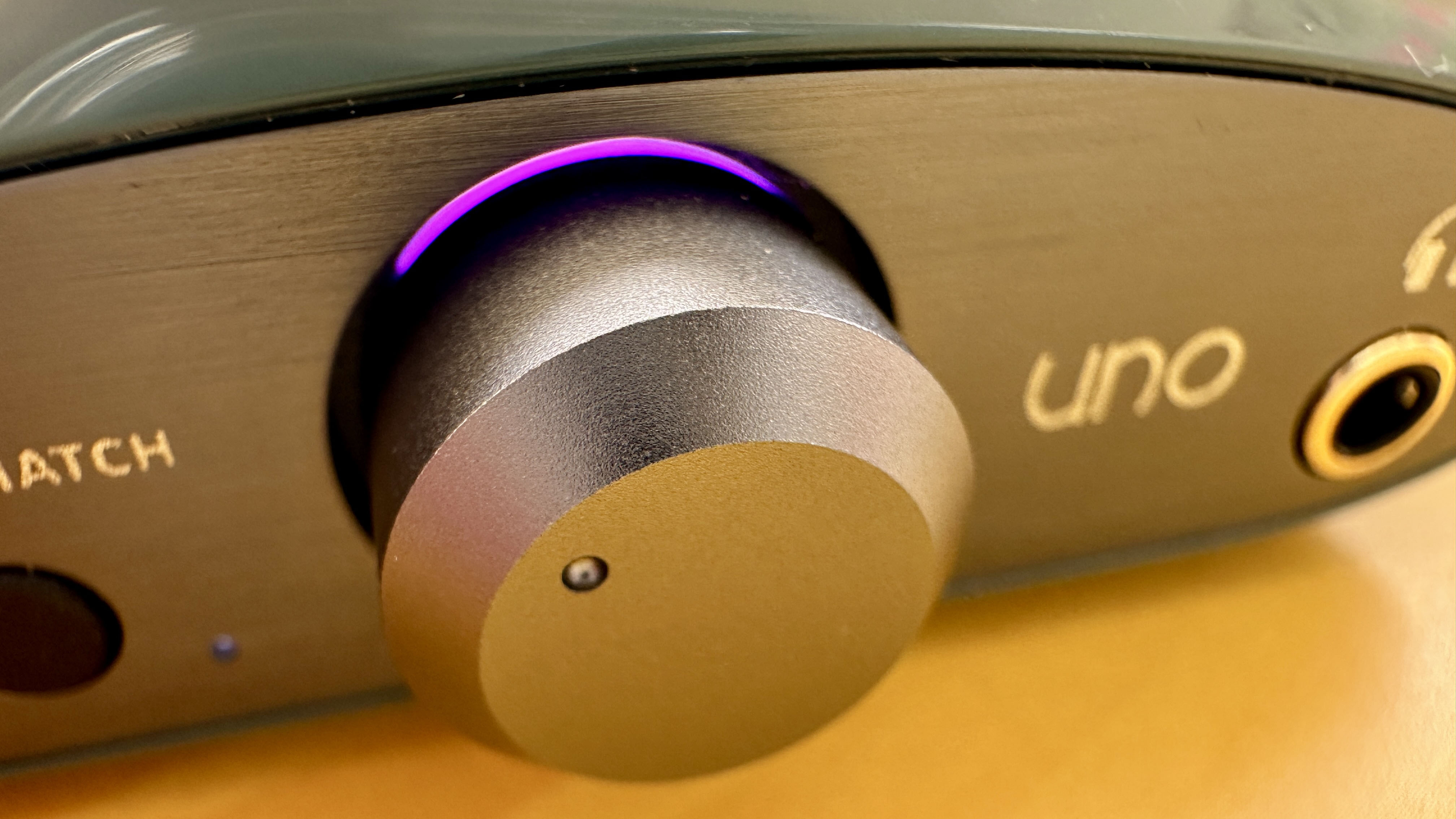
There are only two hard-and-fast rules to be observed when listening to the iFi Uno: don’t listen too loud (which is always good advice in any circumstances, to be fair), and don’t listen too quietly. Abide by these and you’ll find the Uno to be a cracking little headphone amp/DAC.
Unsurprisingly, it does its best work when given some big, information-rich high-resolution digital audio files to deal with, and when you plug some of the best wired headphones into the 3.5mm output.
It doesn’t turn its nose up at bog-standard audio files or ordinary headphones, but it’s such a capable little device it really deserves to be given the best tools to work with. To be fair, though, you don't have to push the boat out all that far for the iFi Uno to reveal that it sounds almost comically superior to an unassisted Apple MacBook Pro. In every meaningful way, it’s a more accomplished listen.
The low frequencies it generates are deep, solid, textured and properly controlled - and so thanks to the way the Uno snaps into the leading edges of bass sounds and the way it controls their decay, it expresses rhythms with real positivity. At the opposite end of the frequency range it creates treble sounds with crunch and shine, but also plenty of substance to balance out the bite. And in between, it invests the midrange with an absolute stack of fine detail - so singers of all types get to express their character and attitude explicitly.

It knits the entire frequency range together with confidence, displaying an even hand from top to bottom - there’s no lopsidedness or bumpiness to the journey from bass to treble, just a smooth and straight line. It has more than enough dynamic headroom to punch out from ‘quiet’ to ‘loud’ in an instant, and it is adept enough where detail retrieval is concerned to make the more minor variations in dynamics apparent too. And it creates a large, well-organised and properly controlled soundstage, so even complex, instrument-heavy recordings are laid out confidently.
Wind up the volume towards dangerous levels and a little of the Uno’s composure deserts it, though. Treble sounds tip over from ‘absolutely as bright as is acceptable’ to ‘too bright and actually quite hard’, and the iFi becomes a rather tiring (not to mention hazardous) listen as a result. And if you listen at very low levels, the ‘left/right’ channel balance becomes uneven - basically, the left channel pretty much disappears.
These are far from fatal characteristics, you understand. You need only nudge the volume up a touch to restore stereo balance, and no one’s advising you to listen at top volume in any event. In every other circumstance, the iFi Uno is a very accomplished little device indeed.
iFi Uno review: Design & Usability
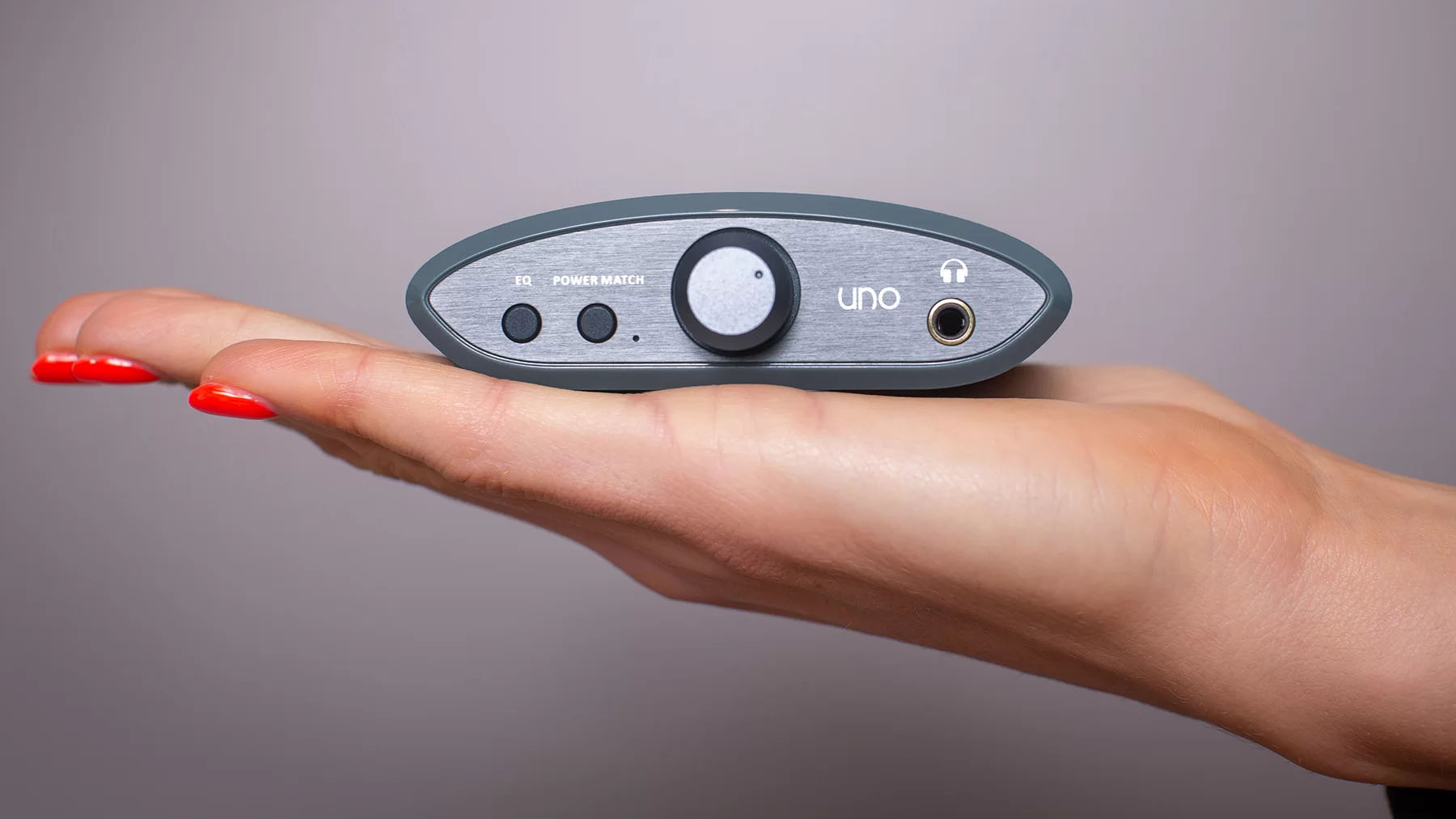
iFi is to be applauded for even gesturing towards ‘design’ where the Uno is concerned. After all, this is a product that is (by necessity) small, light and functional - and yet the company has managed to make it look vaguely interesting and vaguely ovoid, like so many of the more affordable products in its line-up.
At 26 x 88 x 81mm (HxWxD) the Uno will fit into a pocket almost as easily as it fits on a desk, and at 92g it’s hardly a burden. The textured plastic it's built from feels perfectly adequate for the job, and the little feet on its base are grippy enough to keep it steady even when you plug cables in.
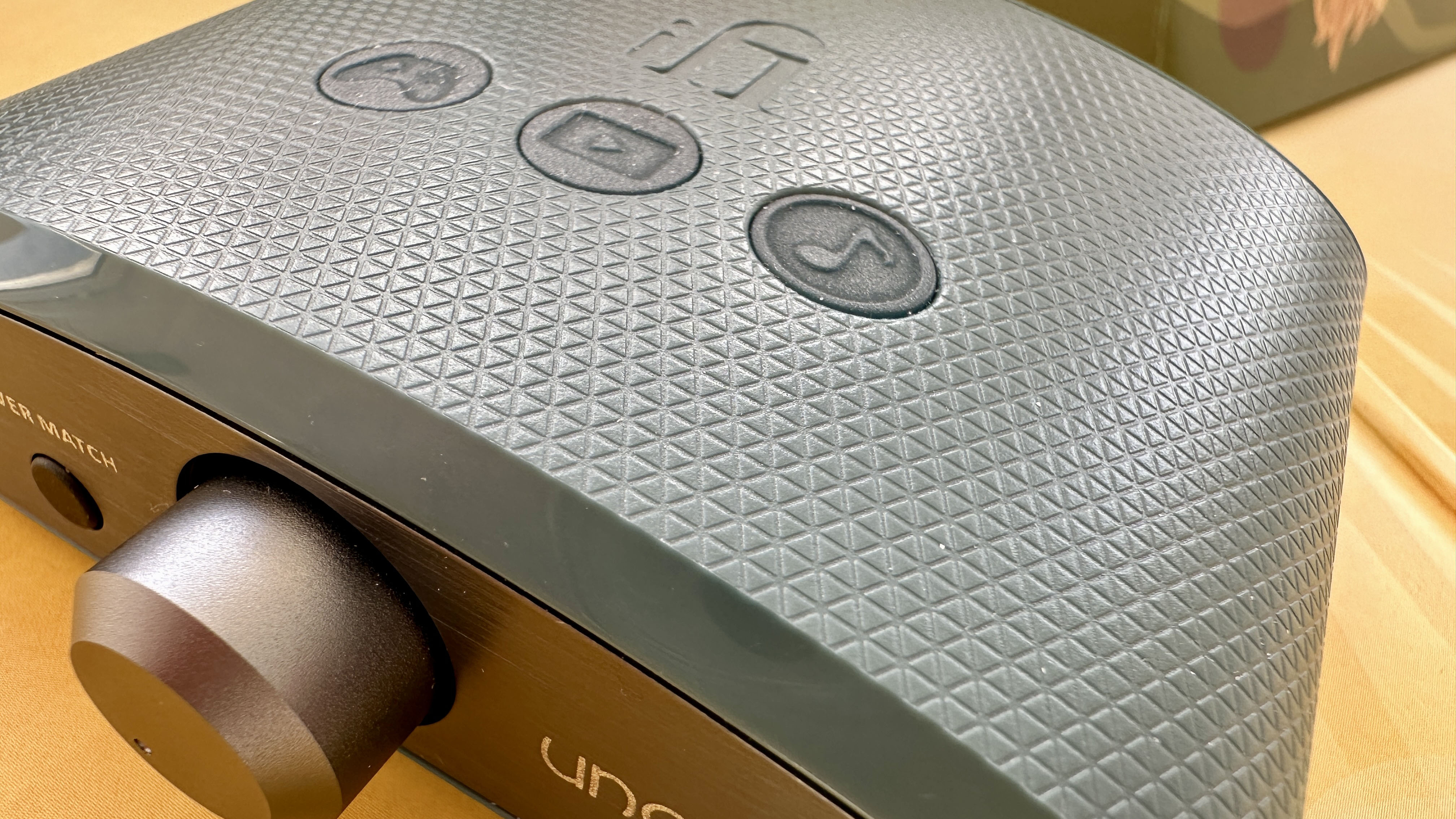
As far as usability goes, it couldn’t really be any more straightforward. On the rear panel there’s a USB-C socket - the iFi uses this both for power and for data transfer. It’s accompanied by a pair of gold-plated stereo RCA outputs, in case you want the Uno to send an analogue signal to an amplifier, powered speaker or similar.
Up front, there’s a (relatively) large dial in the centre of the front panel. This is your volume control, and also the ‘power on/off’ switch - it is backlit in one of five different colours to indicate the file size and type the Uno is dealing with.
To its right there’s a 3.5mm gold-plated analogue headphone socket - behind it sits iFi’s ‘S-balanced’ circuitry that seeks to minimise crosstalk and electrical noise. To its left there are a couple of little buttons - one is labelled ‘power match’, and is basically an output control (or ‘dynamic range enhancement’, as iFi prefers) to help with matching output to headphone sensitivity. The other is labelled ‘EQ’, and it allows you to cycle through the digital filters iFi has hit on to cover ‘game’, ‘movie’ and ‘music’. One of three rather vague icons on the top of the chassis lights up to indicate which you’ve selected.
iFi Uno review: Verdict
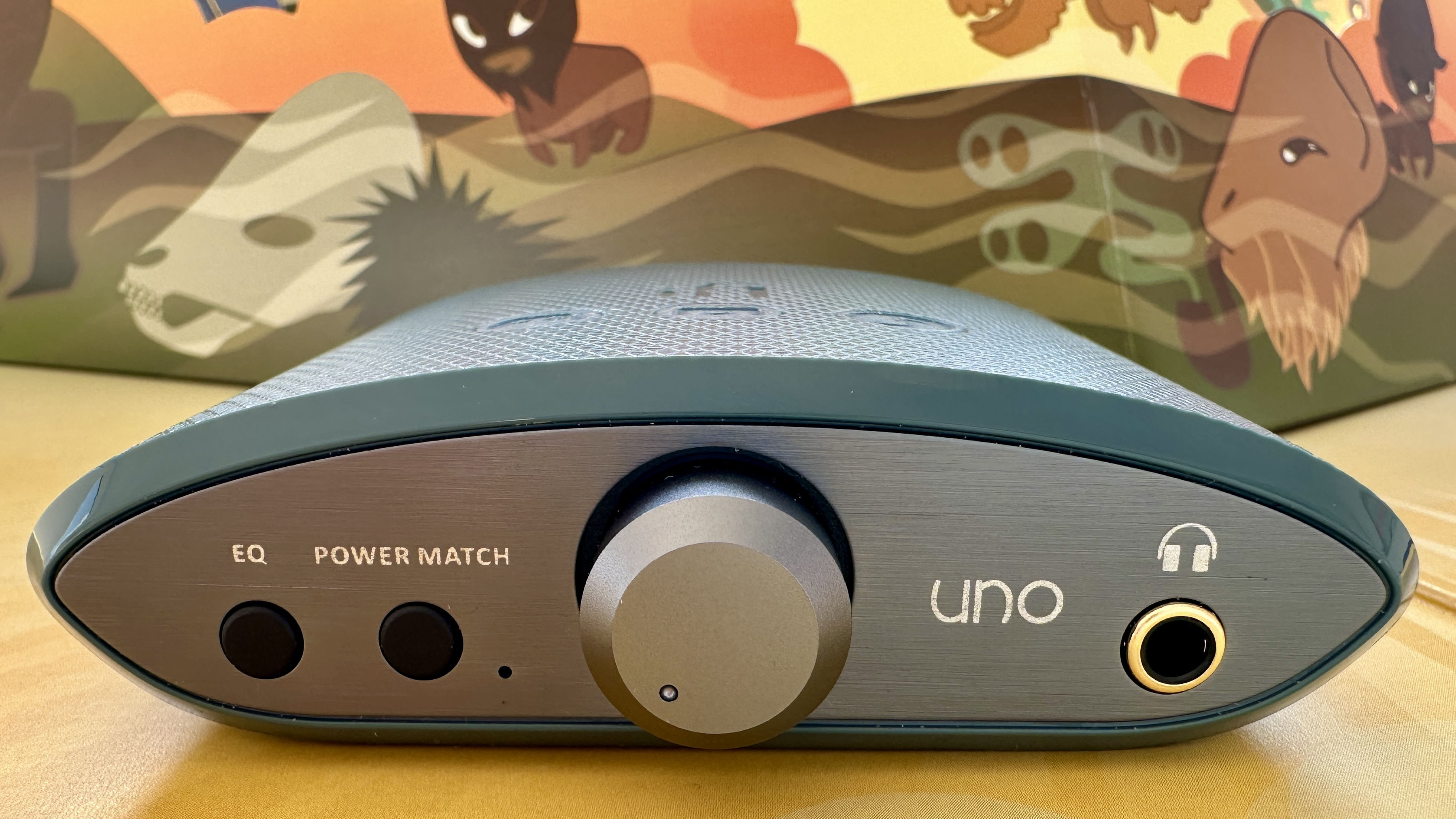
It’s hard to overstate the value for money the iFi Uno represents if you’re trying to turn your laptop into a viable source of music. As long as you don’t equate ‘merit’ with ‘physical size’, you can’t really go wrong with this DAC. You’ll be hard-pushed to spend this sort of money more effectively.
Also consider
It’s a sign of the value the iFi Uno represents that the most appropriate alternatives we can suggest are all a bit more pricey. The Astell & Kern AK HC3, for instance, is a more accomplished device than the Uno, but then it’s a fair bit more expensive. The same goes for the EarMen Sparrow (if you can find one anyway) - more affordable than the Astell & Kern, but more expensive than the Uno. For now, this iFi would seem to have the field clear.
Sign up to the T3 newsletter for smarter living straight to your inbox
Get all the latest news, reviews, deals and buying guides on gorgeous tech, home and active products from the T3 experts
Simon Lucas is a freelance technology journalist and consultant, with particular emphasis on the audio/video aspects of home entertainment. Before embracing the carefree life of the freelancer, he was editor of What Hi-Fi? magazine and website – since then, he's written for titles such as Wired, Metro, the Guardian and Stuff, among many others. Should he find himself with a spare moment, Simon likes nothing more than publishing and then quickly deleting tweets about the state of the nation (in general), the state of Aston Villa (in particular) and the state of his partner's cat.
-
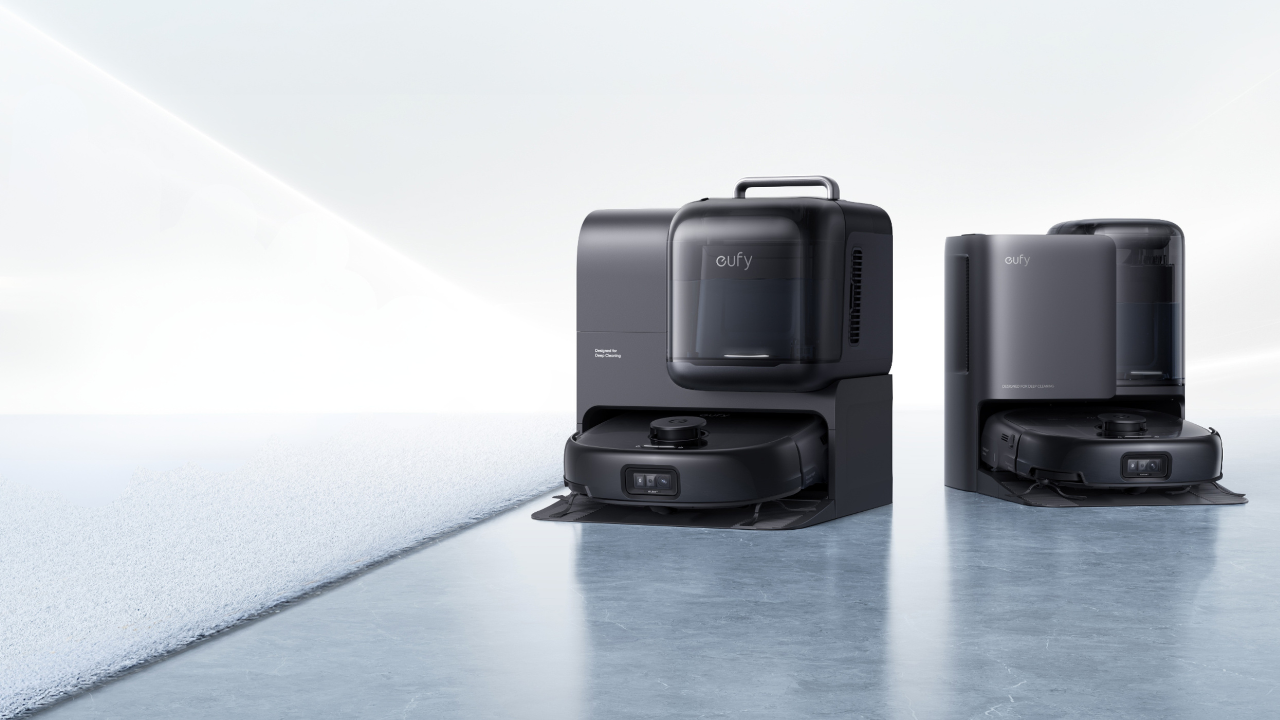 Eufy’s latest robot vacuum doubles as a portable deep cleaner for spot cleaning
Eufy’s latest robot vacuum doubles as a portable deep cleaner for spot cleaningA global first in home cleaning tech
By Lizzie Wilmot Published
-
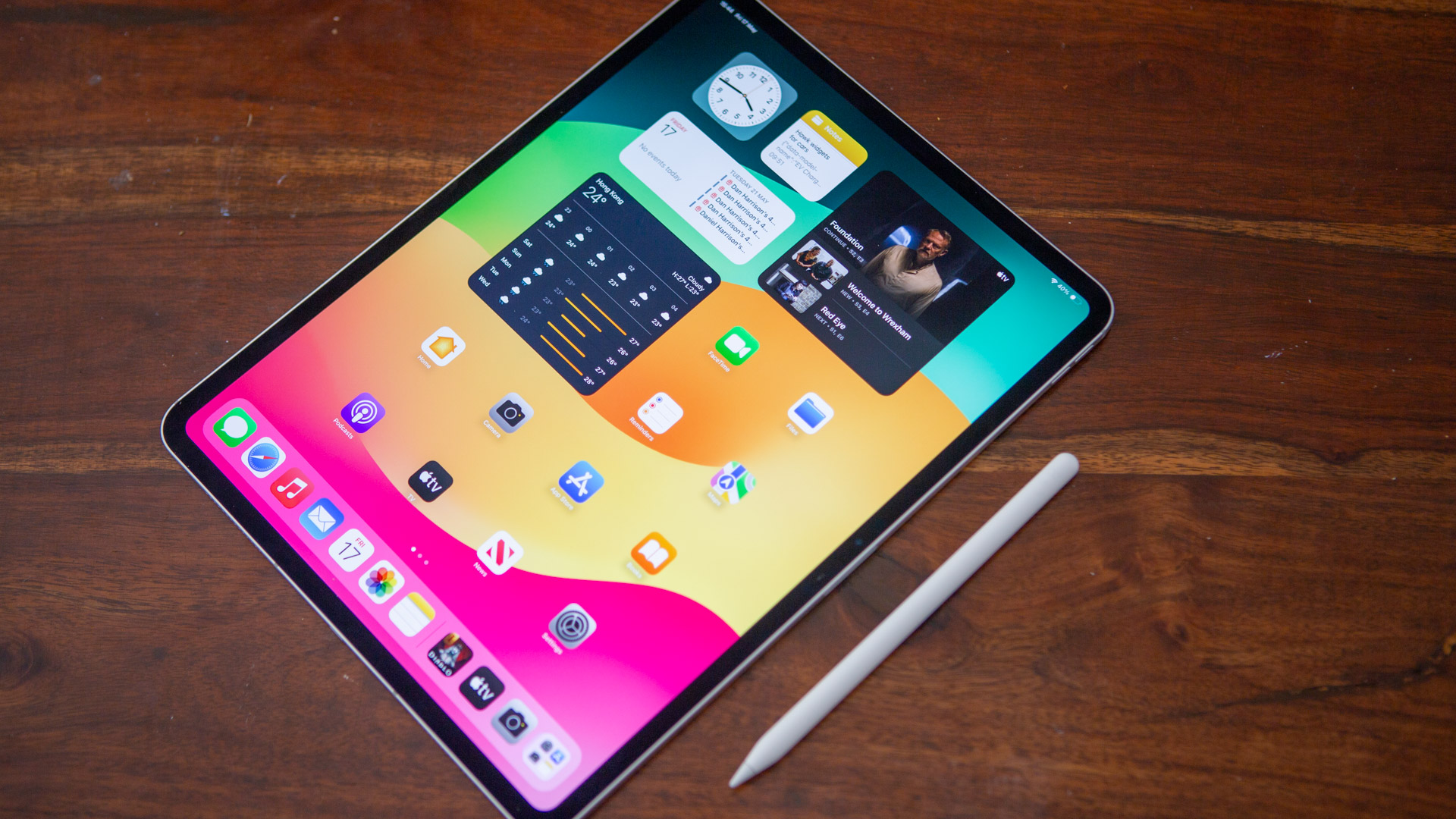 iPad reportedly getting major makeover and your current model could benefit too
iPad reportedly getting major makeover and your current model could benefit tooApple is said to be making a change that iPad power users have been wanting for years
By Carrie Marshall Published
-
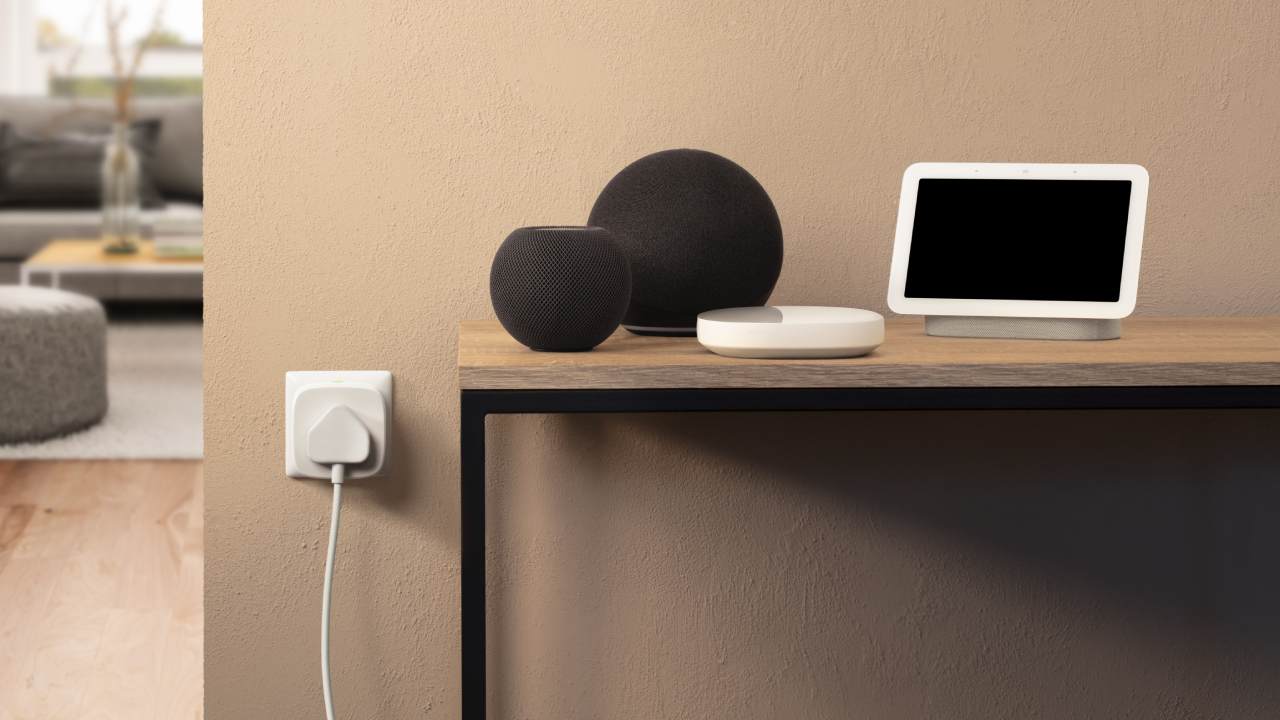 Eve’s smart plug gets impressive Matter upgrades – but I’m most excited about the app
Eve’s smart plug gets impressive Matter upgrades – but I’m most excited about the appEve Energy adds Matter support and an updated Android app
By Bethan Girdler-Maslen Published